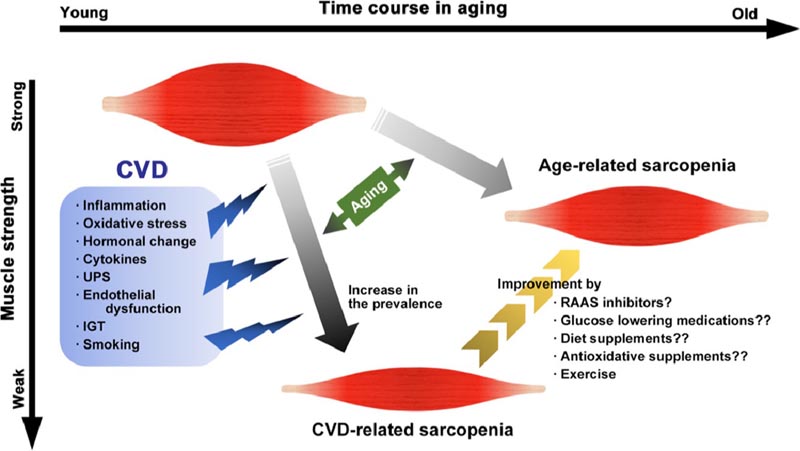Highlights • Sarcopenia is a high risk factor for falls, resulting in increased mortality. • Cardiovascular disease increases the prevalence of sarcopenia and osteosarcopenia. • Multiple biological reactions in cardiovascular disease accelerate sarcopenia. • Various diagnostic biomarkers and treatments of sarcopenia have been reported. |

Sarcopenia , decreased skeletal muscle mass, weakened skeletal muscle strength, and reduced physical performance with aging, is a component of frailty and a high risk factor for falls , resulting in increased of mortality.
In patients with cardiovascular diseases (CVD), systemic inflammation, oxidative stress, overactivation of the ubiquitin-proteasome system, endothelial dysfunction, decreased muscle blood flow, glucose intolerance, hormonal changes, and physical inactivity possibly contribute to CVD-related sarcopenia.
The prevalence of sarcopenia and osteosarcopenia , which is the co-occurrence of osteopenia and sarcopenia, appears to be higher in patients with CVD than in community-dwelling adults, suggesting the need for early diagnosis and prevention of sarcopenia related to CVD.
Atrial stiffness, coronary artery calcification score, and serum vitamin D levels may be helpful as biomarkers for suspecting sarcopenia, and renin-angiotensin-aldosterone system inhibitors may play a role in medical prevention and treatment. of sarcopenia related to CVD.
There are few convincing reports of the effectiveness of dietary and antioxidant supplementation in sarcopenia at present, while aerobic exercises and resistance training have been recognized as an effective strategy to prevent and treat sarcopenia.
















